 |
 |
 |
| |
Hepatitis C Screening & Prevalence among Veterans in Dept of Veterans Affairs Care in 2012
|
| |
| |
Reported by Jules Levin
AASLD 2013 Nov 1-5 Wash DC
Lisa Backus MD PhD12, Pamela Belperio PharmD13, Timothy Loomis PhD1, Troy Shahoumian MPH PhD1, Larry Mole PharmD1
1Dept of Veterans Affairs office of public Health/Population Health, 2Veternans health Administration Palo Alto, 3Veterans Health Administration Greater Los Angeles
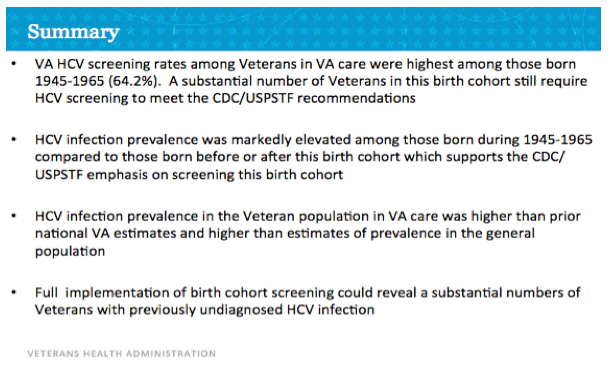
Program Abstract
Background: Veterans in Department of Veterans Affairs (VA) care are known to be at increased risk of hepatitis C virus (HCV) infection. In 2012, the Centers for Disease Control and Prevention (CDC) recommended one-time HCV screening for all persons born during 1945-1965 to reduce HCV-related morbidity and mortality. We assessed the extent to which Veterans, particularly those born during 1945-1965, have been screened for HCV and estimated the potential clinical impact of complete birth cohort screening based on HCV infection prevalence in those most recently screened.
Methods: The VA's Corporate Data Warehouse was used to identify the birth dates and VA laboratory tests from October 1999 through December 2012 for all Veterans with at least one VA outpatient visit in 2012. We accepted HCV antibody, viral load and genotype tests as evidence of HCV screening. We calculated HCV screening rates, confirmatory HCV RNA testing rates, anti-HCV prevalence and HCV infection prevalence.
Results: Among 5,500,392 Veterans in VA care in 2012, 54.7% had VA HCV screening at least once: 41.5% of those born before 1945, 64.2% of those born during 1945-1965 and 58.0% of those born after 1965. Confirmatory HCV RNA testing was performed for 95.1% of Veterans with positive antibody results. In over 2.9 million Veterans screened, anti-HCV and HCV infection prevalence were 2.9% and 1.7% respectively for those born before 1945, 13.1% and 9.9% for those born during 1945-1965 and 1.9% and 1.1% for those born after 1965. For those in the 1945-1965 birth cohort in VA care in 2012, HCV infection prevalence based on the year HCV screening first occurred declined sharply from 33.2% to 10.3% for those first screened between 1999 and 2003 and then gradually from 9.5% to 5.7% for those first screened between 2004 and 2012. Extrapolating the most recent HCV infection prevalence to Veterans in the 1945-1965 birth cohort not yet screened (n=905,751) suggests that up to 51,000 additional Veterans would be identified with HCV infection with full birth cohort screening.
Conclusions: Among Veterans in recent VA care, HCV screening rates were highest among those born during 1945-1965. Anti-HCV and HCV infection prevalence were markedly elevated among those born during 1945-1965 compared to those born before or after this birth cohort supporting the CDC's emphasis on birth cohort testing. Given the observed HCV infection prevalence, full adoption of birth cohort screening may reveal substantial numbers of Veterans with previously unknown HCV infection.
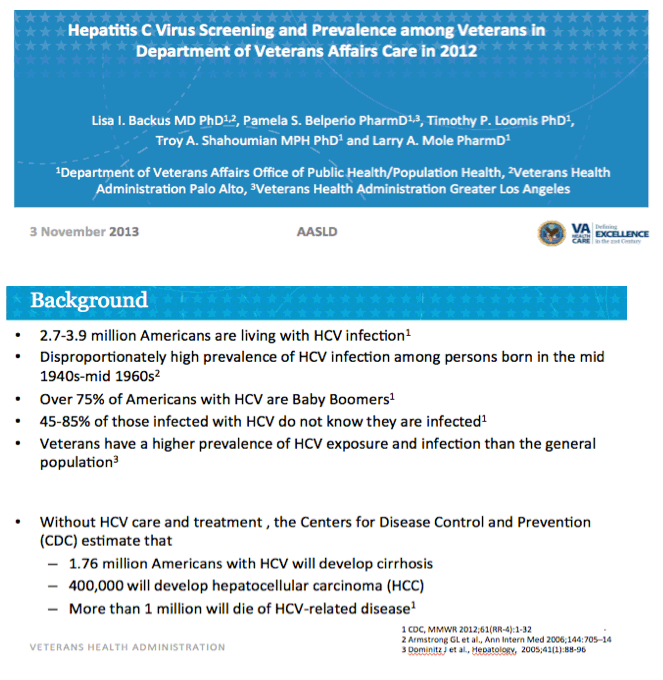
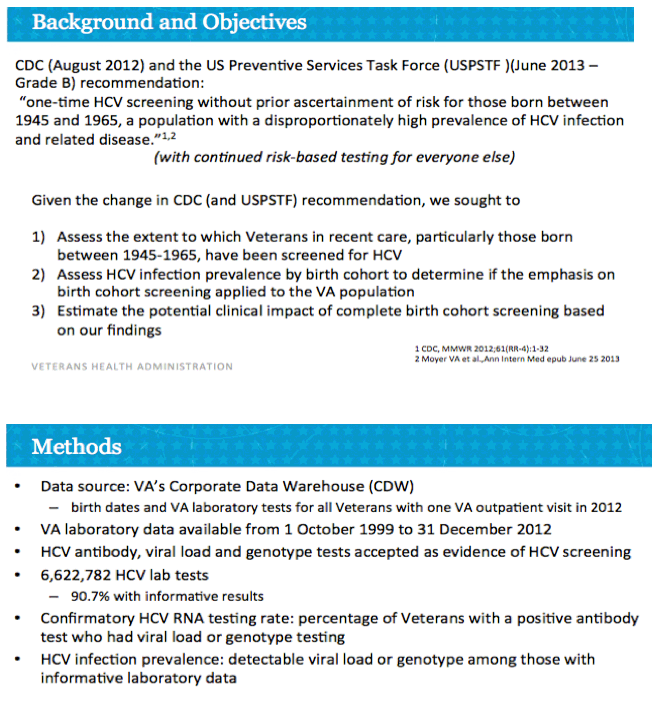
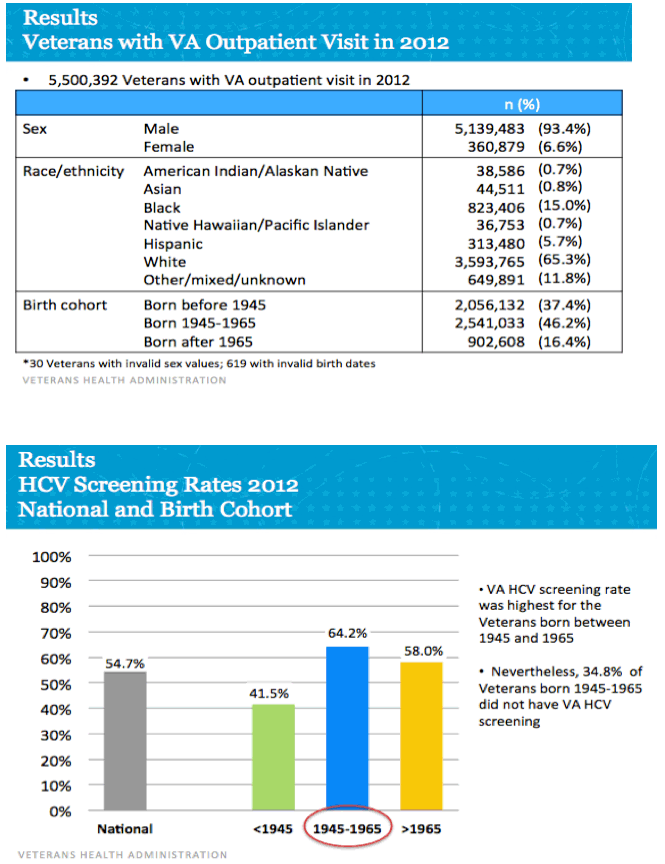
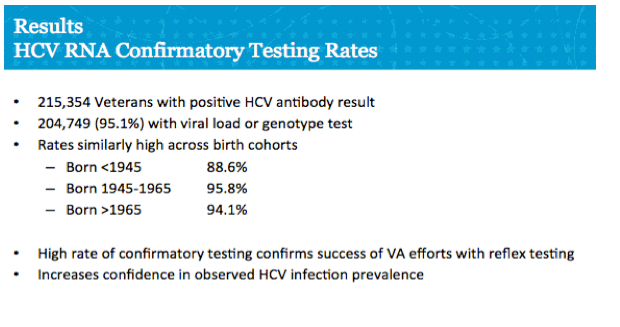
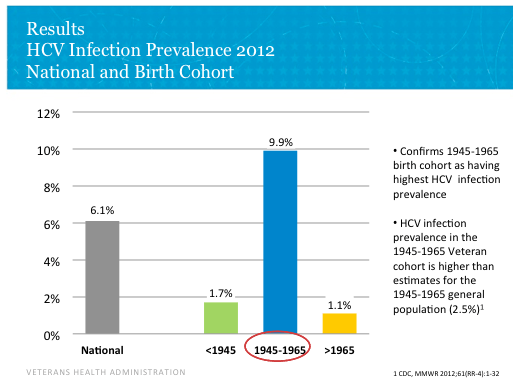
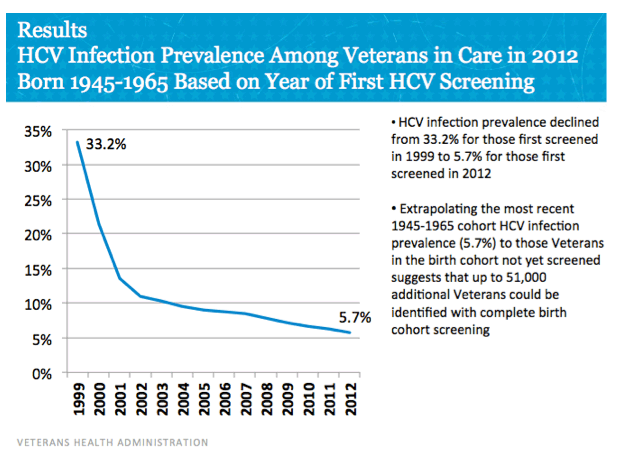
|
| |
|
 |
 |
|
|